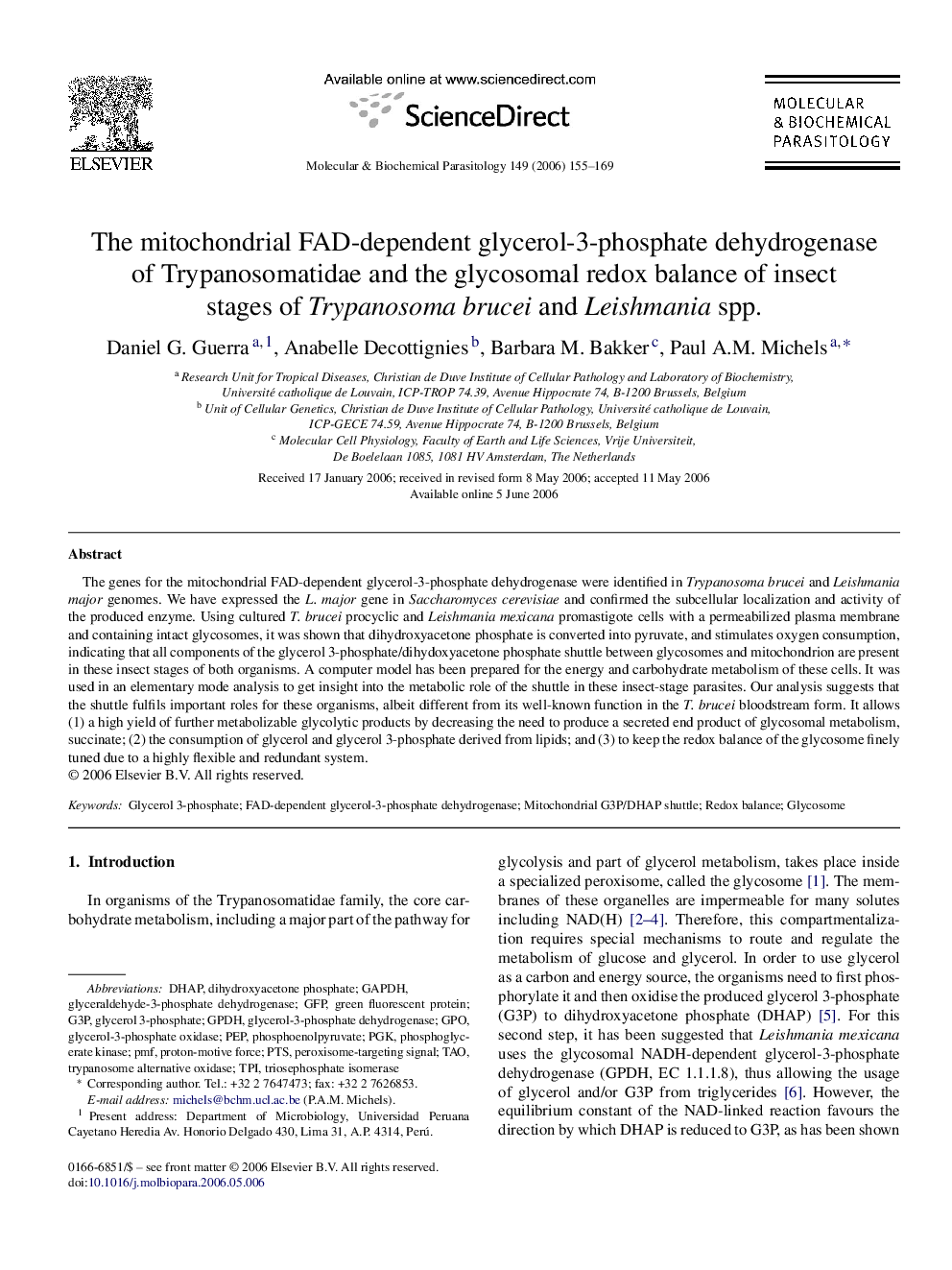| Article ID | Journal | Published Year | Pages | File Type |
|---|---|---|---|---|
| 2830341 | Molecular and Biochemical Parasitology | 2006 | 15 Pages |
The genes for the mitochondrial FAD-dependent glycerol-3-phosphate dehydrogenase were identified in Trypanosoma brucei and Leishmania major genomes. We have expressed the L. major gene in Saccharomyces cerevisiae and confirmed the subcellular localization and activity of the produced enzyme. Using cultured T. brucei procyclic and Leishmania mexicana promastigote cells with a permeabilized plasma membrane and containing intact glycosomes, it was shown that dihydroxyacetone phosphate is converted into pyruvate, and stimulates oxygen consumption, indicating that all components of the glycerol 3-phosphate/dihydoxyacetone phosphate shuttle between glycosomes and mitochondrion are present in these insect stages of both organisms. A computer model has been prepared for the energy and carbohydrate metabolism of these cells. It was used in an elementary mode analysis to get insight into the metabolic role of the shuttle in these insect-stage parasites. Our analysis suggests that the shuttle fulfils important roles for these organisms, albeit different from its well-known function in the T. brucei bloodstream form. It allows (1) a high yield of further metabolizable glycolytic products by decreasing the need to produce a secreted end product of glycosomal metabolism, succinate; (2) the consumption of glycerol and glycerol 3-phosphate derived from lipids; and (3) to keep the redox balance of the glycosome finely tuned due to a highly flexible and redundant system.
